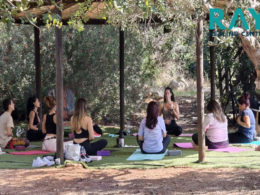Conversations around mental health have become widely accepted, and it is not uncommon nowadays to hear people talking openly about attending psychotherapy sessions.
The stigma around receiving mental health support seems to be slowly fading, with some individuals embracing psychotherapy as a route to personal growth rather than as a last resort when life gets overwhelming.
Yet, as I tell people that I am graduating in dance movement psychotherapy (DMP), I am faced with quizzical looks and the humorous remark, “I don’t know how to dance, ta!”.
Locally, there is still a lack of awareness of creative arts therapies, particularly DMP.
‘An instrument of communication’
The Association for Dance Movement Psychotherapy UK (2025) defines DMP as “a relational process in which client(s) and therapist use body movement and dance as an instrument of communication during the therapy process”.
It is a person-centred approach to psychotherapy which takes into account all facets of a person: the physical, psychological, social and spiritual.
Forming part of the creative arts therapies, DMP allows clients to express themselves non-verbally. This can be in the form of dance or any kind of movement, even while sitting down.
Although the name can be initially misleading, clients are not expected to know how to dance or even to want to dance during therapy sessions.
As one of my lecturers at the University of Derby eloquently put it, the dance is in the relationship between therapist and client.
“Clients are not expected to know how to dance or even to want to dance during therapy sessions”
Being in possession of an MA in Dance Movement Psychotherapy, I am trained to observe and analyse movement qualities and rhythms that clients use. This applies to clients who simply sit in a chair and twirl their hair around their fingers while talking, as much as it applies to clients who ask to put on some music and start dancing around the therapy space.
We are trained to work in a diverse range of settings, both in one-to-one sessions, as well as in groups, making this approach very flexible and adaptable.
I have worked with clients who chose to sit down and talk, others with whom I engaged in meditative exercises, clients who wanted to draw and play, some who got up and danced, while others yet sat in complete silence.
Looking at various ways of communicating with clients other than expecting them to sit down and start talking to you opens up a wide range of possibilities to work within that modality.
Connecting with the deeper self
As part of my dissertation, I explored my own lived experience of obsessions and compulsions through movement, using a heuristic and autoethnographic methodology.
Using movement as part of the methodology allowed me to deeply explore my compulsive rituals I have been engaging in since childhood, and enabled me to create new movements, incorporating flow into my rigid rituals.
This is just one example of how DMP can support individuals living with mental health conditions. It is also helpful in:
• Gradually increasing mindful mobility;
• Becoming more self-confident;
• Becoming more aware of bodily sensations and emotions;
• Providing another avenue to self-expression and relationship;
• Tapping into the unconscious mind;
• Accessing trauma stored in the body.
DMP is a creative form of psychotherapy that balances play and work: it digs deep into difficult parts of the self using unconventional and playful methods. Most importantly, the therapy is led by the client, and nothing is imposed against the client’s wishes.
Luanne Grima holds an MA in Dance Movement Psychotherapy from the University of Derby following the award of a Tertiary Education Scholarship. She obtained her first psychology degree from the University of Malta and worked with a diverse range of clients in the social field. She is passionate about activism, art and spirituality, and is the founder of Ċaqliq.










